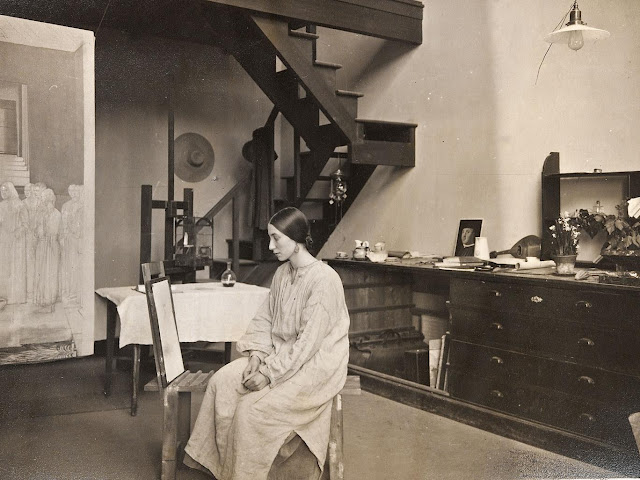Winifred Knights: Artistic 'genius' who died in obscurity goes back on show in London
Described as a “genius” and a “leading light” of 20th-century British art by her peers, Winifred Knights died in relative obscurity at the age of 47. Even attendees at the Tate Britain’s recent Fighting History exhibition, which offered visitors a chance to see her much-admired painting The Deluge, thought incorrectly that the work was by Stanley Spencer.
But now, seven decades after her death, a London gallery will host a major retrospective of the artist’s influential work. Dulwich Picture Gallery aims to re-establish the first woman to hold the prestigious Rome Scholarship as a leading light of 20th-century British art by putting on the retrospective next year, bringing together her major works for the first time.
The exhibition will be guest-curated by Sacha Llewellyn. “The quality of her work never ceases to inspire and amaze,” says Ms Llewellyn. “She never had a major retrospective in her lifetime, which makes it so exciting that it’s happening at last.
“Knights was considered a total genius when she was working. But very few people know anything about her at all today. These five paintings brought together will leave no doubts about her talent.”
The exhibition, which opens in June, will include The Marriage at Cana, which is travelling from the National Gallery of New Zealand in Wellington, while the others are all held in the UK.
Her work was inspired by the Italian Renaissance, the First World War, Knights’s fine-art tutors and the issues of being a female artist in the first half of the 20th century.
“In a post-suffragette world, the work embodies the fighting spirit of women artists,” according to Ms Llewellyn, who has studied the archive of letters and journals discovered by Knights’s son John Monnington. “The exhibition will argue passionately in favour of a reassessment of her place in 20th century British ar
Born in Streatham, south London in 1899, Knights was brought up by a family with links to the Socialist Fabian Society, who believed in women’s economic independence from men, and encouraged her artistic endeavours.
In 1915 she enrolled at Slade School of Art, where she developed her exacting methods under the guidance of her teacher Henry Tonks, whose pupils also included Augustus John, Wyndham Lewis and Spencer.
The First World War also shaped her. In 1917 she witnessed, from the top deck of a tramcar, a huge explosion at Silvertown munitions factory; the shock led her to suspend her studies. The event also inspired The Deluge, according to Ms Llewellyn, “with those fleeing figures”.
That painting won the 1920 Prix de Rome, making her the first woman to be awarded the scholarship in decorative painting by the British School at Rome, on the decision of a panel that included John Singer Sargent.
Knights’ letters talk of the struggle to establish herself in the male-dominated art world of the day. She was the only Rome scholar not to be elected to the British School at Rome board – because she was a woman. Her work often dealt with female self-empowerment and subjugation. Her output dropped off in the late 1930s, although she returned to painting shortly before her death in 1947.
The exhibition in Dulwich is part of the gallery’s Modern British series devoted to “critically neglected” artists.

Comentarios
Publicar un comentario